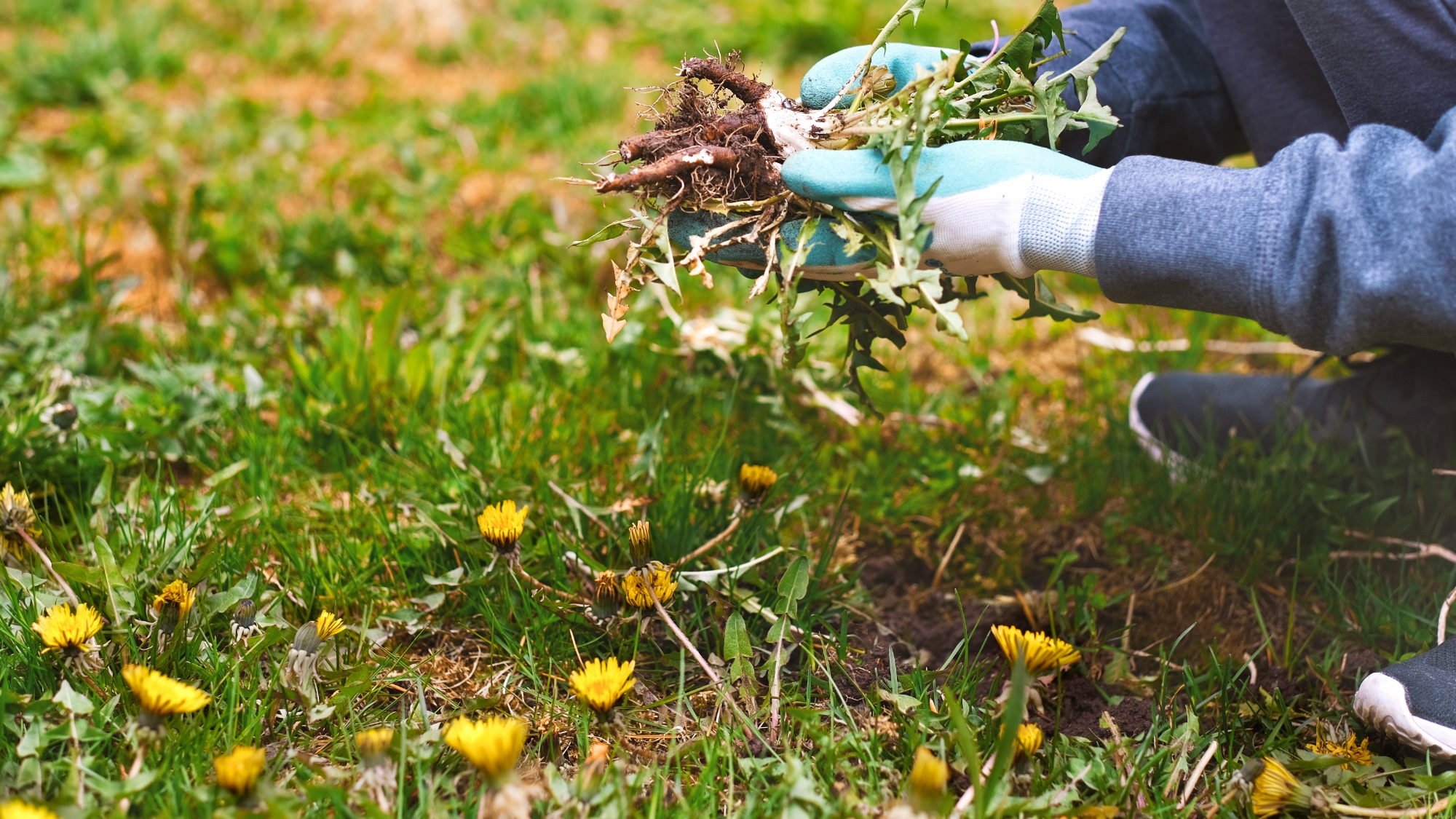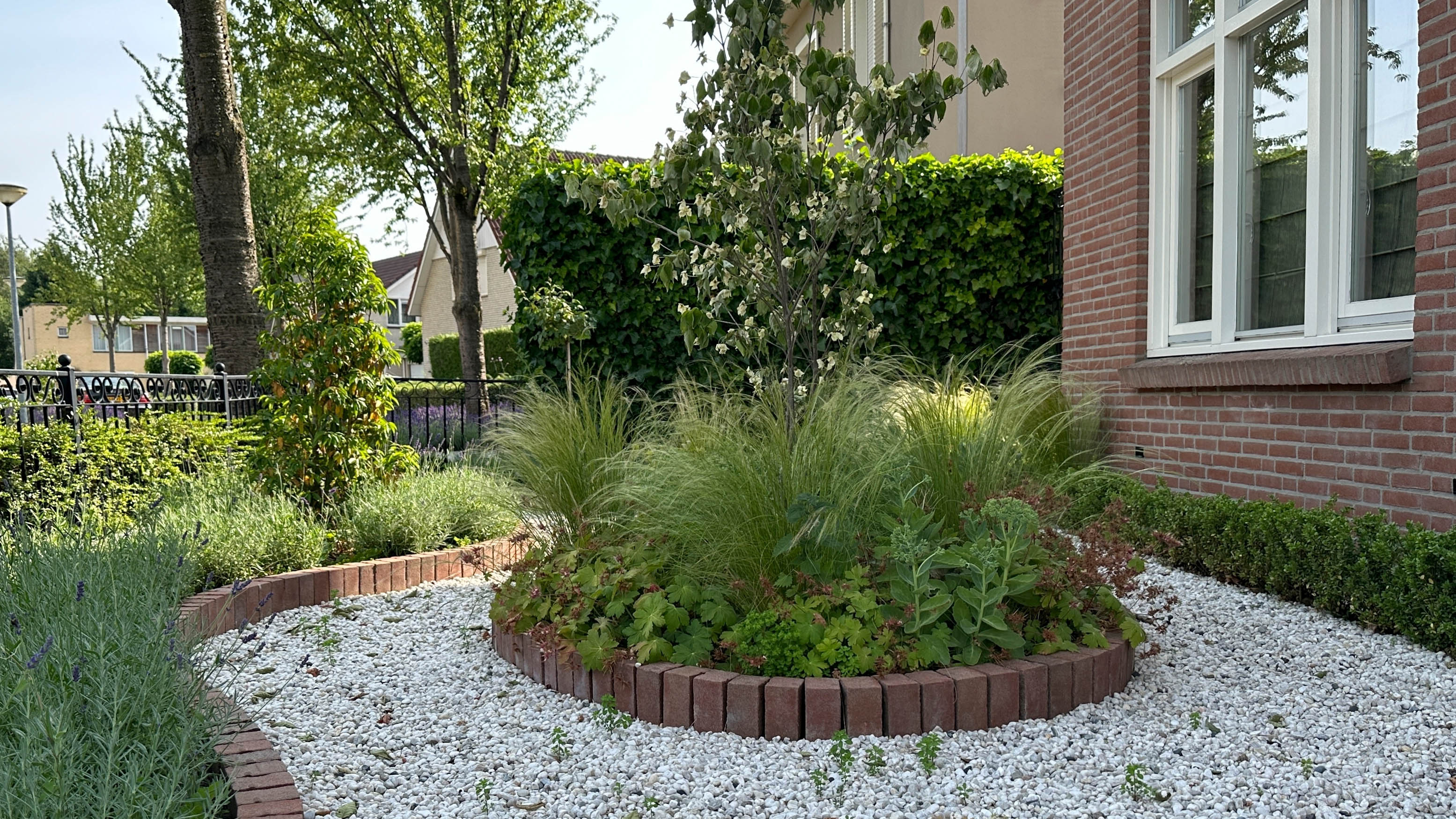7 ways to prevent weeds from invading your yard

It’s every gardener’s nightmare to see their yard overrun by weeds. Not only can weeds grow rapidly, soaking up the valuable nutrients in your soil, but can ruin the overall aesthetic of your beautifully landscaped outdoor space. What’s more, any nearby plants or flower beds will be at risk of smothering, and won’t thrive.
And while there are plenty of ways to tackle weeds, like these 7 ways to kill weeds naturally, or learning how to get rid of dandelions — preventative measures are always key. That’s why it’s handy to know ways to prevent weeds from taking root in your yard, to save you time (and hassle!).
So, if you don’t want the time-consuming chore of pulling weeds or using toxic herbicides, check out these 7 ways to prevent weeds from taking root in your yard.
Alternatively, you could check out these 7 plants that prevent weeds in your yard and avoid making these weeding mistakes , and viral weeding hacks to avoid. And 5 surprising reasons you should let weeds grow!
1. Lay down mulch

Another simple way to prevent weeds is to cover the soil with a layer of mulch. Mulch is essentially a top layer of organic material that has plenty of uses to the yard. Its preventative layer blocks any weed seeds from getting the sunlight needed to grow and germinate.
Not only can it suppress weeds, but also locks moisture into the soil to prevent it from drying out. Mulch also acts as a great barrier to protect against harsh winds and sunlight. What’s more, most mulches contain essential nutrients, which can make a great feed for plants and yard.
Organic mulches are best to use, and are usually made from grass clippings, leaves, straw, wood chips or bark. While inorganic mulches are made from geotextiles and plastic. Simply place thin layers of mulch/grass clippings (no more than 1-2 inches thick), around your plants, shrubs or even vegetable plots. This will break down naturally, adding valuable nutrients to the soil, such as nitrogen and potassium.
Get instant access to breaking news, the hottest reviews, great deals and helpful tips.
Bear in mind, that mulch will decompose over time, so replace when necessary to ensure that your mulch is about 5cm deep. If you want to know more top tips, here’s when you should replace mulch — and why it's essential.
2. Use protective weed mats

Weed mats are a heavy-duty, fabric or plastic landscape barrier for garden soil. These are a great way to suppress weed growth, and also used to protect young trees and shrubs.
Essentially, the weed mat cloth stops the sunlight from reaching the weeds, and stunts their growth. In addition, the weed mat allows water to penetrate through the soil, and also retain moisture around trees. This will ensure that water isn’t lost through evaporation, especially in a heatwave, and your plants or shrubs will grow well. Before you lay down the weed mat however, experts recommend removing weeds, and cutting grass as low as possible.
Typically, weed mats are available in garden centers or online this Happybuy 3FTx50FT 5OZ Garden Weed Barrier, ($26, Amazon), to protect your garden and flower beds. Plus, this is an effective, environmentally friendly way to prevent weeds from reaching the surface.
3. Grow plants close together

Weeds tend to invade open, sunny outdoor spaces, taking advantage of areas that are free from plants. This is why you usually see an abundance of weeds in bare spaces or between plants, flower beds and shrubs.
Whether you’re planting flowers or vegetables, it’s always recommended to plant close together, and make sure that bare patches of lawn are overseeded.
Bare soil in the yard can result in weeds quickly germinating and becoming a nuisance. If you do have bare soil however, cover with a layer of mulch or plants to suppress weed growth.
4. Only water plants and not the entire yard

Weeds can deprive your yard and surrounding plants of water, so create a drought for them. While it’s easier to water the entire lawn or yard at one time, you’re also creating the ideal breeding ground for weed growth.
Experts advise only to water the base of garden plants using a soaker hose, rather than watering everywhere. By only watering these areas, you’ll deprive weeds from moisture, and stunt future growth.
5. Apply edging borders

If you have unruly weeds along paths or borders, edging boards or strips are a great way to prevent unwanted weed growth. Such vertical or horizontally laid barriers will literally block the sunlight, and inevitable spread of perennial weeds/invasive roots.
In fact, you can use several types of materials for edging barriers, such as strips, paving slabs, or even leftover bricks in your yard. These will be effective in suppressing any sign of weeds, and keeping your yard presentable.
6. Grow ground cover plants

You might think the only reason for ground cover plants is to hide unsightly patches of bare soil, but there are other uses. These low-growing, cover plants can also keep weeds at bay by literally leaving no room for weed growth.
These tend to remain low, and don’t grow particularly high, making the perfect option for a weed-free garden. What's more, they will make an attractive feature to any yard.
7. Thatch on soil

While there are plenty of reasons to dethatch a lawn for healthier grass, a little surface thatch on a lawn can actually be a good thing. Similar to organic mulch, leaving a layer of surface thatch on top soil or on a lawn that can also combat weed growth.
In addition, this layer encourages moisture to keep the soil cool, and protect the grass from drying out too quickly. This is especially useful in the summer months, or during scorching temperatures.
It’s worth noting this will only work with a thin layer of thatch. When the thatch is thick, this makes it harder for essential nutrients to penetrate the roots.
What are weeds?
Essentially, a weed is a wild plant that grows rapidly in unwanted places. Weeds compete with plants and other crops for soil nutrients, water and sunlight, and can also provide a shelter for garden pests and diseases.
There are three main types of weeds: annual, perennial and tough weeds. Annuals are usually spread around the yard through seeds, but have weaker roots — making them easier to remove. Perennials are more difficult to get rid of as they spread through their roots as well as by seed, while tough weeds are extremely aggressive and invasive, such as Japanese Knotweed, Brambles and Ivy.
Common yard weeds include dandelions, purslane, lamb’s quarters, bindweed, and pigweed.
More from Tom's Guide
- Here are 5 best trees to grow in pots
- Plus, 5 backyard plants that could damage your home
- Check out these 5 backyard plants that could damage your home

As the Homes Content Editor, Cynthia Lawrence covers all things homes, interior decorating, and garden-related. She has a wealth of editorial experience testing the latest, ‘must-have’ home appliances, writing buying guides and the handy ‘how to’ features.
Her work has been published in various titles including, T3, Top Ten Reviews, Ideal Home, Real Homes, Livingetc. and House Beautiful, amongst many.
With a rather unhealthy obsession for all things homes and interiors, she also has an interior design blog for style inspiration and savvy storage solutions (get rid of that clutter!). When she’s not testing cool products, she’ll be searching online for more decor ideas to spruce up her family home or looking for a great bargain!
